The digital world is closing in on the physical. Augmented reality — already used by e-commerce giants like Amazon — lets users place digital versions of furniture in living rooms. Spatial computing goes a step further. Rather than just a digital overlay, it is a technology that allows actual interaction between the real and the digital world.
Spatial computing goes beyond Augmented Reality (AR) or Mixed Reality (MR), leveraging artificial intelligence to gauge physical space and offer the end user an immersive experience — something beyond screens. In fact, spatial computing is closer to the Extended Reality (XR) concept, as it projects virtual replicas of real-world entities and lets you interact with them. This technology uses AR elements, Virtual Reality (VR) ingenuity, and MR’s scope to create virtual worlds sitting atop the real. This guide covers everything you need to know about spatial computing, its current form, and future potential and implications.
BeInCrypto Trading Community on Telegram: discuss the money of the future – cryptocurrencies, – with like-minded people, read reviews on the best crypto platforms & wallets, get technical analysis on coins & answers to all your questions from PRO traders & experts!
How does spatial computing work?
Spatial computing is all about making sense of “Space” in relation to computing. This way, any digital overlay can fit onto the physical, three-dimensional space, allowing us to interact with it. Here is a simplistic way of looking at it:
Imagine you are using a headset to look at your 50-inch television. What happens is that a digital variant of that television pop-ups right in front of your eyes, allowing you to interact with the television’s content using gesture recognition and other technologies, pull out the edges of the television to make it bigger, or even place a working screen beside the TV screen.
The physical space obviously remains unaltered for everyone else. Only the user wearing the headset can interact with the digital inclusions fitting into the physical space.
“Space,” as in Spatial, plays a major role as the device or the tech perceives the room’s depth, size of the TV, surrounding elements, and more to present the digital content in the best possible manner.
Revisiting the “spatial” component
Our usual day-to-day computing interactions involve 2D spaces like a smartphone screen, a TV, etc. We directly interact with them via touch or peripherals like a keyboard and mouse to input commands and view responses.
Sponsored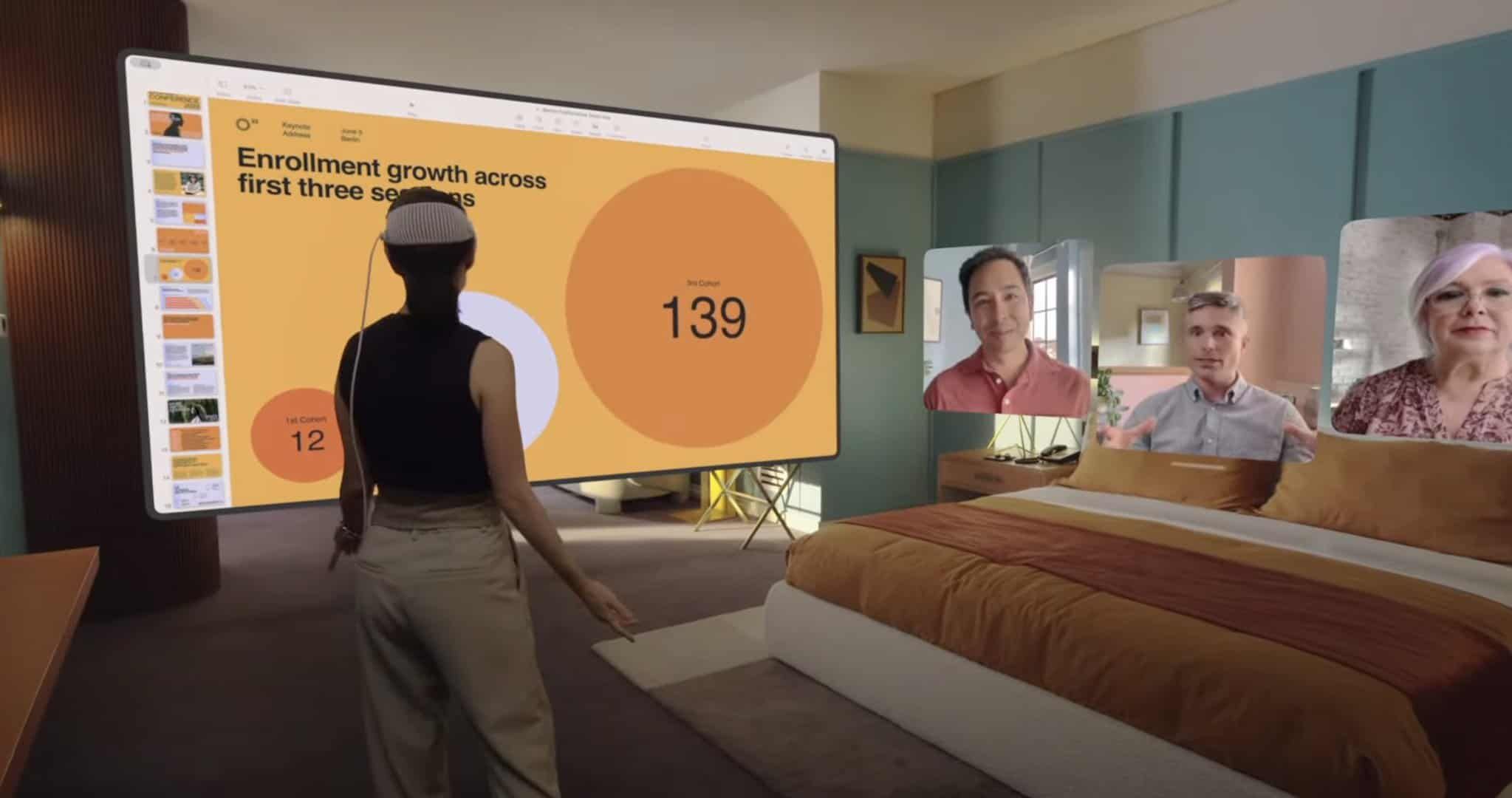
Spatial computing changes all that by transforming your 2D space into an interactive 3D space. It can create virtual replicas of your 2D devices, superimposing the same on the physical spaces while keeping the physical dimensions of the surroundings in mind.
You might understand this better if you have ever interacted with Pokemon Go. The game uses your smartphone and AR to track location and embed digital content into your physical space. In the case of Pokemon Go, the digital content, or Pokemon, is only visible to you via the smartphone screen. For everybody else, the physical space remains intact.
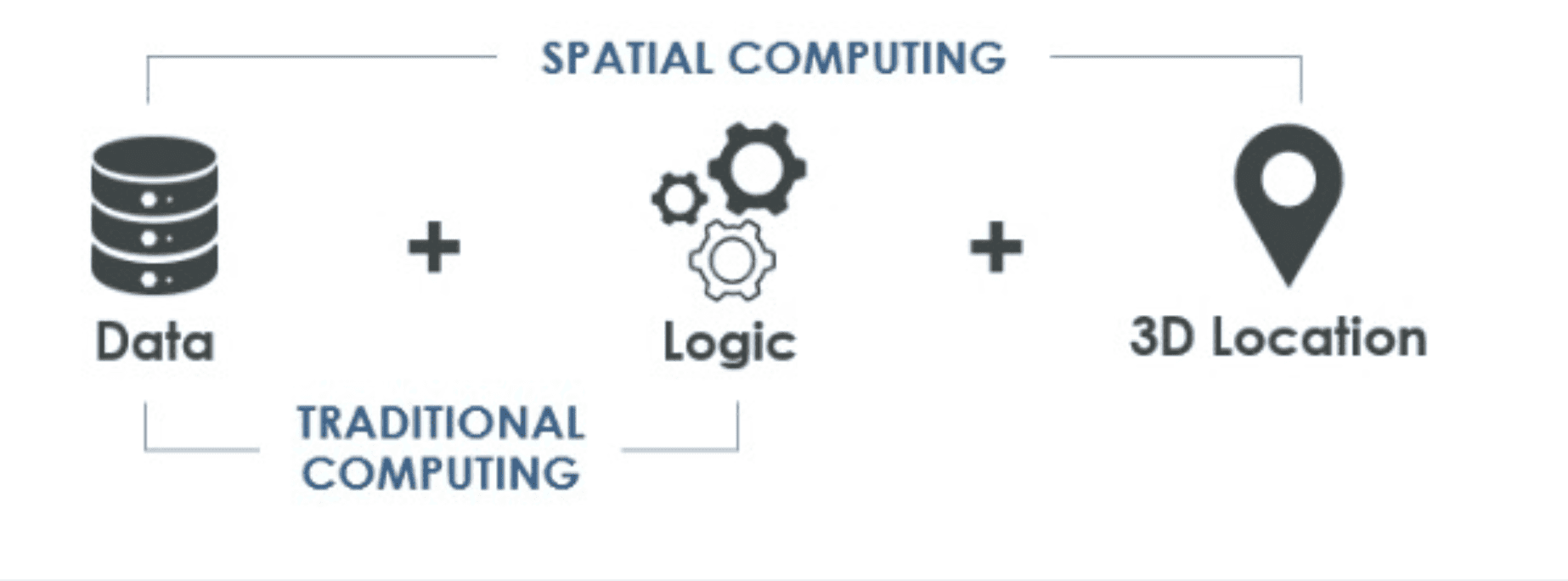
In spatial computing, the location, depth, and distance components in the real world are used to place the right digital content in physical spaces. While that is the “space” part and accounts for the immersive experience, the computing part allows you to interact with the digital content using a set of era-defining technologies.
Did you know? Spatial computing is preserving cultural heritage. Google “Open Heritage” is one such project, creating 3D representations of heritage sites across the globe.
How to interact with the 3D world?
The concept of spatial computing can be applied to the video game space. In a legacy video game, you use controllers to interact with the characters. With MR headsets like the Varjo XR-3 or the HoloLens, specialized hand-held controllers can wirelessly interact with the virtual characters by recognizing your gestures.
Spatial computing aims to go one step further. It can tie up the game character’s response to your physical movements using a set of technologies. So in the video game that runs in the virtual world, “You,” from the real world, becomes the character.
Additionally, you need to understand that specialized headsets with built-in spatial computing capabilities are still required to interact with the 3D world. And this is where Apple’s upcoming Vision Pro can be a game changer.
AI has a role to play!
Spatial computing, despite sharing similarities with AR, VR, and MR happens to be a more evolved concept due to “artificial intelligence.” The best way to explain this is to revisit the “Iron Man” series from Marvel, where the protagonist Tony Stark had J.A.R.V.I.S., the AI capable of continuously learning and making changes to the spaces based on Stark’s preferences and interactions.
Core technologies in play
Spatial computing is an advanced piece of tech that amalgamates several other concepts concerning computer science, Human-Computer Interaction (HCI), AI, and more. Let us quickly look at the most important ones:
Computer vision and depth-measuring tech
Our eyes are great at depth sensing, perceiving critical objects in real space, and making adjustments based on room dimensions. Built-in support for depth sensing and computer vision can help your spatial computing device achieve the same level of ingenuity. This technology is reminiscent of the self-driving car, where Computer Vision detects pedestrians, signals, and more.
Depth sensing and computer vision make spatial computing the magic it is. With these technologies built-in, it becomes possible for your device to project the digital twins of a real-world entity, keeping the dimensions of your surroundings intact. So the next time you project your smartphone as a digital, free-floating entity, Computer Vision and Depth Sensing will ensure that the screen adheres to the wall or the range of your vision and doesn’t bleed out.
Spatial mapping
This piece of technology involves the creation of 3D models using space and depth inputs and an understanding of objects. Spatial Mapping is akin to the tech behind the fictional “Marauder’s Map” from the Harry Potter universe— a 3-dimensional document revealing the entire layout of Hogwarts, along with the objects and people.
Sensor fusion
Spatial computing requires data from several sensors. Sensor fusion is one such inclusion that allows your device to combine data across sensors to create a holistic and immersive experience. With spatial fusion, data from accelerometers, cameras, gyroscopes, and other sensors can be clubbed to assess the environment perfectly — much like our brain combining info from our eyes, ears, and skin to perceive and comprehend a feeling or situation.
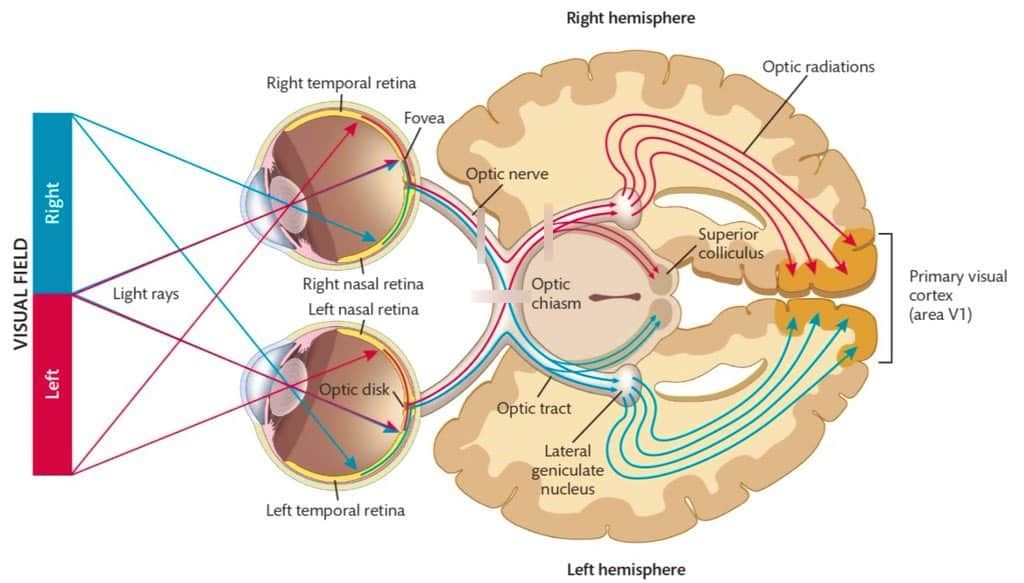
Gesture recognition
This component of spatial computing allows the device to understand your hand movements, gesture, and more to interact with the digital content. Imagine projecting three screens for research and reading and immediately swiping up to remove one of those screens from the line of vision just by moving a hand in the air.
To make gesture recognition work, spatial computing devices use tools like ultrasonic sensors emitting sound waves, optical sensors, motion sensors, depth cameras, infrared sensors, and AI/ML resources to interpret and learn from the sensor data.
Sponsored Sponsored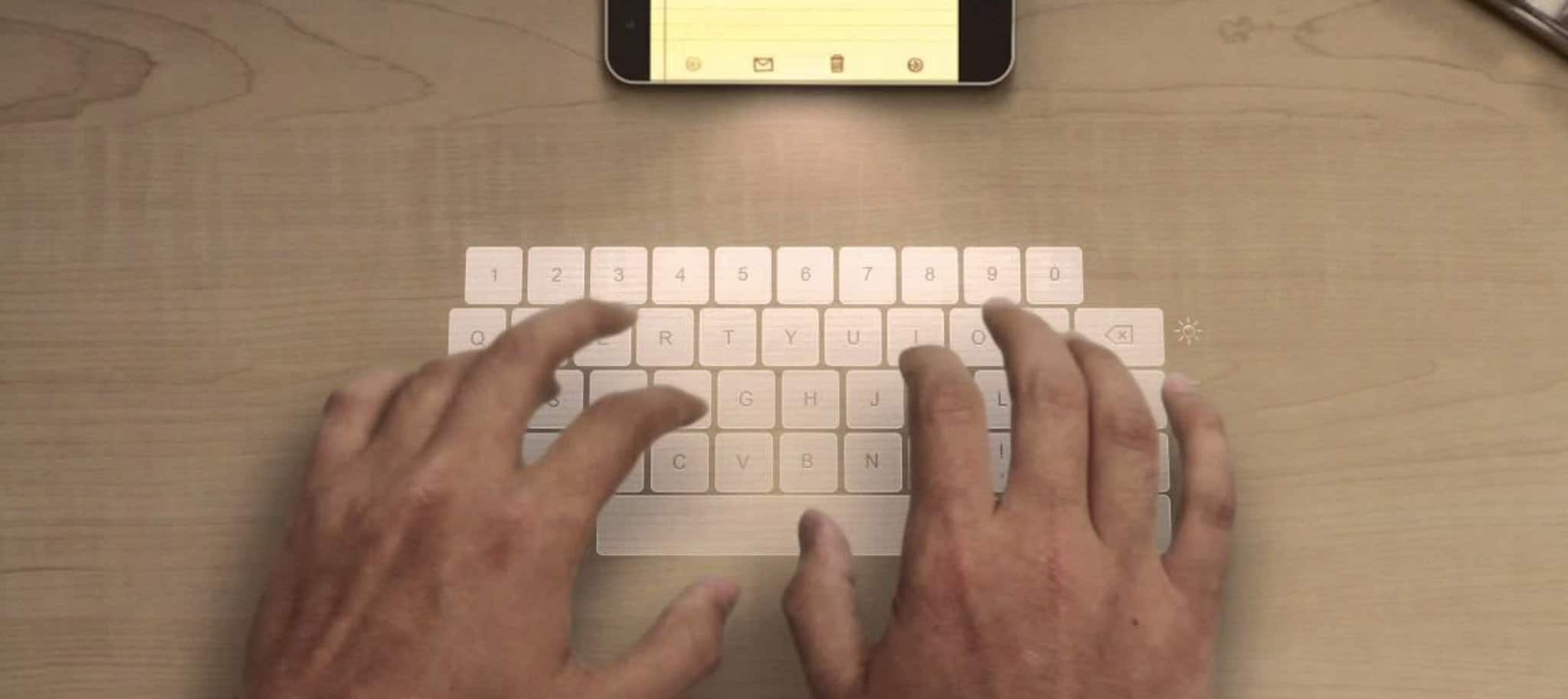
Skeuomorphism
Less of a technology and more of a design principle, skeuomorphism is all about mimicking the real-world components in the digital world. In spatial computing, skeuomorphism can help a user transition seamlessly from the 2D space to the 3D space — which would look a lot like the actual object from the real world. One example of how skeuomorphism might work in the spatial computing space is a digital book that you can grab, flip through and scribble on.
AI and machine learning
A spatial computing product or tool works best if it can learn from a user’s habits and interactions. Consider it more like Netflix’s recommendation engine that learns about your viewing habits and suggests content accordingly. Therefore, if you keep wearing a spatial headset, the device keeps learning from your surroundings, interactions, usage habits, and more.
All the technologies mentioned above work in unison to make spatial computing possible, especially by feeding an eye-based input to stimulate the brain into sensing and believing what’s in front of us.
Additionally, prototypes can also focus on audio ray tracking, IoT interactions, and spatial audio to add to the quality of experiences.
Distinctive characteristics of spatial computing
It is common to consider spatial computing somewhat similar to other immersive technologies like AR, VR, and MR. And while some similarities exist, mentioning them in the same breath isn’t always accurate. Here is how spatial computing differs from each of the mentioned technologies, with a game and its spatial computing version proposed to aid understanding:
Spatial computing vs. AR
Let us circle back to Pokemon Go. The current game-playing scenario is all about catching Pokemon avatars in real spaces, courtesy of augmented reality. However, right now, you can only catch the Pokemon. These digital creatures do not actually interact with their surroundings.
However, with spatial computing, Pokemon can suddenly hide inside a nearby bush, fly around the room, or slide under a bridge, making the digital content interact with the physical world. You can even scare a Pokemon away if you make a loud noise.
Spatial computing vs. VR
Let us consider Beat Saber, a Virtual Reality game that lets you cut through beats using the lightsaber. The actual game is based on a digital world. However, with spatial computing, this game can be made in such a way that music beats can seamlessly transition between the digital and the real world. You can have the lightsaber in your living room and gestures it better. With spatial computing, you can readily blur the lines between the real and the virtual.
Spatial computing vs. MR
Imagine you are playing chess in a mixed-reality world. You have a digital board on your coffee table, and you are using gestures to move the pieces around. Impressive, right? But with spatial computing, you can do more. With AI built-in, you can get more out of the chess game, for example, by viewing the stats of your moves or rewinding if needed. This would readily enhance the game-playing experience.
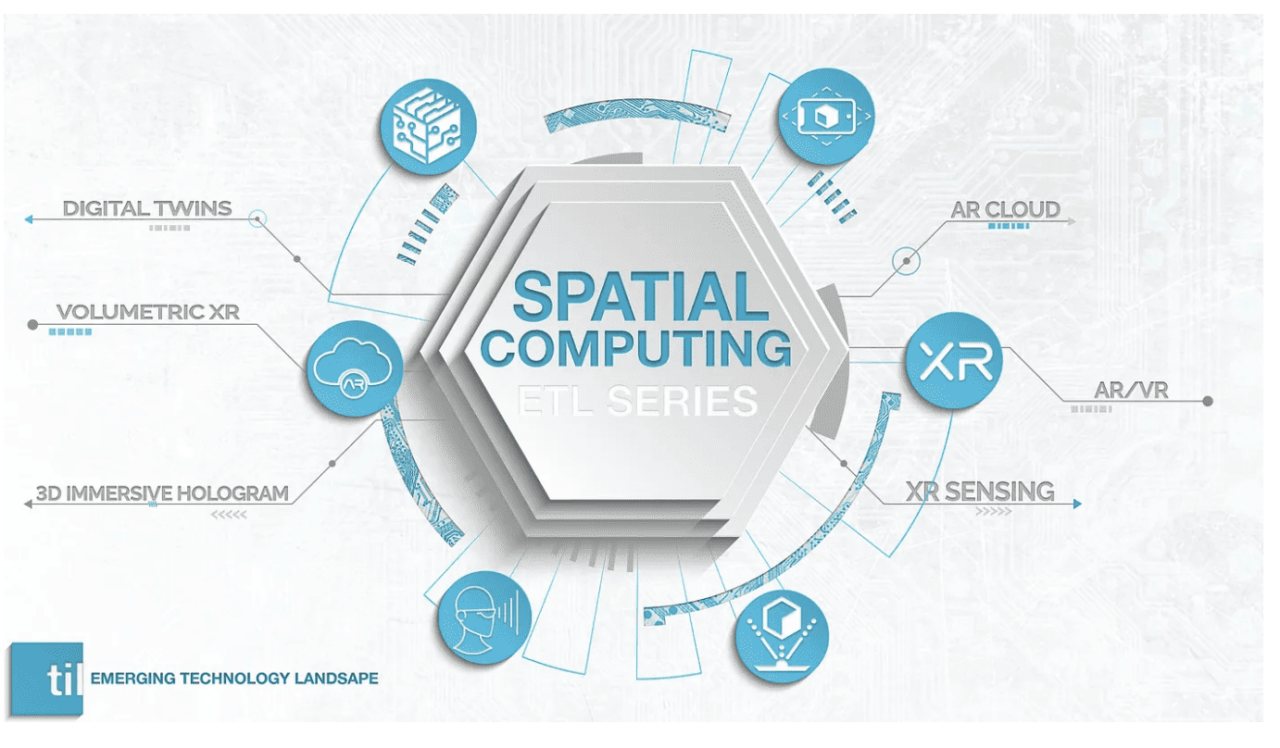
Prototyping in spatial computing
By now, we have discussed the end-user aspects of spatial computing. However, businesses developing products also need to follow the basics of prototyping to improve efficiency, user experience, and risk mitigation strategies. Even though prototyping is a highly technical process, here is a quick and simple breakdown.
Tools needed
Software is the first cog in the spatial computing wheel. These include the likes of:
Sponsored- Unity: a game development platform with support for physics engine and AR-VR integrations.
- Sketchfab: a platform for designers to quickly access Virtual Reality (VR), Augmented Reality (AR), and 3D content for computing projects
- Unreal Engine: a platform that can offer photorealistic rendering support for high-fidelity prototyping.
You can find details walkthroughs for creating Spatial Computing prototypes of each of the mentioned software platforms. Additionally, there are in-house resources to develop prototypes from Google (ARCore) and Apple (ARKit), helping improve user interface interactions and understanding of environments — must-haves for prototyping.
A walkthrough
Here is a simple walkthrough involving a spatial computing product, focusing on shopping as a use case. This spatial computing product works as an application and should be capable of working with a powerful mixed-reality headset. Or, it can be a dedicated product. Regardless, here is what the flow looks like:
Identify features
The first step is to visualize how you want the product to work. This would mean deciding the spatial computing features for the given product or app.
Do you want it to recognize gestures, bring in interactive digital assistants, and include a virtual try-on section for clothes? Perhaps you want to include product insights in an immersive way and/or features like grab-to-buy.
Storyboard
This step involves the initial layout of the app. You should be able to see a 3D menu floating in front. Thanks to gesture recognition support, you can air-tap and pick a category to shop for.
Prototypes
Scene 1: Imagine shopping for furniture. The product allows you to overlay any furniture in your living space. The placement must be perfect with depth sensing and spatial mapping technologies. With spatial computing, you can even interact with the furniture, check it from all angles, see if and how it reclines, and open drawers, all with gesture-based interactions.
Scene 2: You can even activate a digital assistant to help you speak out the product’s traits while viewing the same in 3D. If you like what you see, you can simply grab the 3D product, and the hand gesture recognition support will place it in the cart. You can work on the design of the app, the type of gesture that’s supported, and all that as part of your prototyping flow. Unreal Engine, Unity, or similar platforms can all help with this.
Scene 3: If you want to shop for clothes, you can migrate your virtual self to the ecosystem, make it try on products, and then grab to purchase.
Testing the prototype
Once designed and developed, the prototype needs to be user tested to receive feedback and improved upon. You can change the interaction mechanics, user interface, and other aspects accordingly.
Note that this is a hypothetical scenario, and the prototype can be different.
Best practices
If you have plans to design and develop spatial computing prototypes, the best idea is to start with low-fidelity versions where you only need to test the basic interactions. Starting with basic spatial computing features like waving, swiping, or tapping is advisable. Once you have perfected the basic interactions, you can move to the more complicated ones.
Apple’s ambitious and upcoming Vision Pro offers a number of nifty features. Note that the engineers will have been testing these for years, perfecting each interaction in time.
“I spent 10% of my life contributing to the development of the #VisionPro while I worked at Apple as a Neurotechnology Prototyping Researcher in the Technology Development Group. It’s the longest I’ve ever worked on a single effort. I’m proud and relieved that it’s finally announced.”
Sterling Crispin, former researcher at Apple: Twitter
In addition to that, testing early and as often as possible is key to designing the perfect product. Believe that the process is like an endless learning loop; therefore, iteration, feedback, and multiple takes are common.
Designing spatial computing experiences is not easy. The interactions are multi-dimensional, so it is necessary first to follow the basics of prototyping to visualize, test, and refine the interactions and experiences before actual product development happens.
Sponsored SponsoredThe coding element
With spatial computing, you can make real-world elements and movements akin to interactions in the digital world. Note that everything virtual interaction requires some code.
What skills are needed?
To program spatial computing protocols, you must understand C#, C++, or JavaScript. You should also be aware of physics and 3D modeling techniques. As a developer, you should also have extensive knowledge of AI algorithms.
C# is hailed for its simplicity and compatibility with the Unity platform. C++ is a high-performance language, whereas JavaScript is popular in the spatial computing space, courtesy of the WebXR API, allowing developers to build AR and VR experiences on the web.
How does the coding part happen?
Confused as to which elements of the program are coded? Here is a quick overview of a spatial computing app created for interior designing.
In this scenario, developers might code the application to recognize the room dimensions — using the built-in spatial mapping and depth sensing tools. The code flow would also place virtual furniture on the given space where the user points to. With code, the app should have the understanding that the furniture shouldn’t collide with real-world objects and shouldn’t float mid-air. This would be coding for “Spatial Awareness.”
Developers can also code for interactions. For instance, while playing a video game in mixed reality, the code can be made to recognize specific interactions like pinches, swipes, and more.

Here is a basic code snippet to detect “swiping” and prepare a corresponding interaction in the virtual realm. This type of code snippet can be used to prepare 3D interactions for shopping stores, allowing you a 360-degree view of clothes and furniture, if needed.
What are the uses of spatial computing?
The benefits of spatial computing extend but aren’t limited to the following verticals:
- Gaming: virtual characters interacting with real-world elements
- Education: interactive content creation where abstract concepts can be converted into spatial resources.
- Retail: a revolutionized shopping experience with 3D products, virtual try-on, digital twins, and other concepts
- Healthcare: improved surgical precision with overlays and quick data access
- Manufacturing: engineers can use projection-based imagery to find faults and manufacture products better.
Apart from these use cases, spatial computing and AI integration are also pushing hardware-specific advancements.
One such win is Apple’s upcoming Vision Pro — powered by sensors, the M2 chip, and other futuristic tools.
Plus, with the likes of ChatGPT, Google Bard, Midjourney, and more making content creation easier, spatial computing resources will soon have easy access to real-world information. Even developers can use ChatGPT and other AI chatbots to vet prototypes better.
Even crypto-backed metaverses like Decentraland have weighed in positively on the discourse around spatial computing, a discussion that picked up aggressively after Apple’s Vision Pro announcement.
Are there any challenges?
Despite the many benefits of spatial computing, its implementation isn’t without challenges. These include:
- Software compatibility issues
- Privacy and management concerns regarding user data
- User interfacing and associated complexities
- Health-based concerns driven by extended headset usage
- Hardware limitation and the soaring procurement costs
- Lack of standardization that leads to low-quality apps
- Ethical and safety concerns
It will take some time to overcome these challenges.
Is there enough space in tech for spatial computing?
Spatial computing isn’t yet mainstream. Yet, with Apple announcing a Spatial Computer in the Vision Pro, it might just be a matter of time. Regardless, the success of spatial computing as a piece of tech, in time, won’t be about how innovative it is. Or even about how many features it has to offer in regard to making human interactions more productive. Instead, this will depend on how well spatial computing caters to individuals with limited cognitive abilities. That is something that Apple is planning to bring with its Vision Pro in the form of AssistiveTouch.

